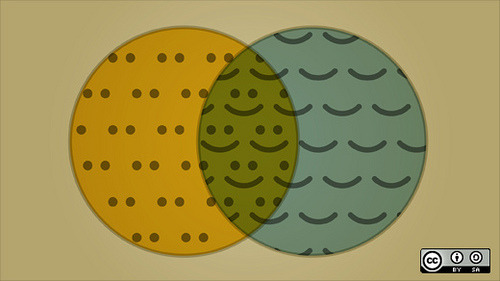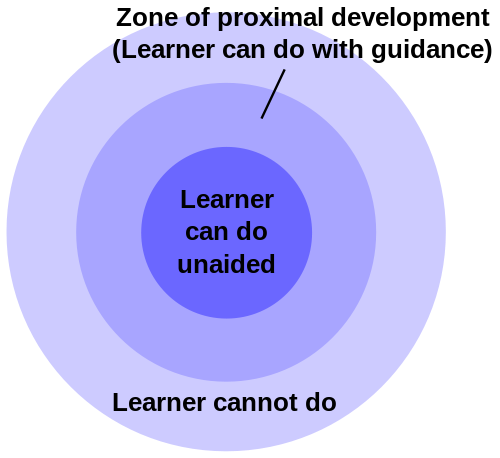
Running a classroom and running a business have interesting parallels for what works best to cultivate intrinsic motivation, effective productivity, and successful performance. Whether we’re students or employees, we need supportive conditions to achieve know-how and expertise.
On the education front, Dr. MaryEllen Vogt has examined the effect of how teachers’ perception of their students’ aptitude influenced their classroom approach. She found that when students were perceived as high performers, teachers:
- talked less and encouraged more interactions among students,
- allowed for more creative and generative approaches to learning,
- offered opportunities for independent work,
- had warmer and more personal relationships with students, and
- spent little time on behavior or classroom management issues.
When teachers saw their students as low performers, they:
- prepared more structured lessons,
- allowed fewer opportunities for student creativity,
- covered less content,
- rewarded students for “trying hard” rather than for “good thinking,”
- spent a significant amount of time on behavior and management issues, and
- had less congenial relationships with students due to their heavy emphasis on discipline.Source: Karen Tankersley, Literacy Strategies for Grades 4-12
The School-Work Connection
So according to Dr. Vogt’s research, teachers cultivate a rich, conducive working environment for high achievers by encouraging autonomy, collaboration, creativity, and personal relationships. These same nutritious factors also translate into feeding employee engagement and productivity. Meanwhile, low-performing students have to deal with trying to learn in a setting that sounds depressingly like a miserable office space, suffering under control, compliance, and discipline, spending more time and energy on management and less on substance.
It’s striking that teaching strategy turns on how teachers view their students’ capacities. Yet, managers who neither trust their employees or believe in their abilities and potential lead in a similarly authoritarian manner, using a carrots and sticks approach that has been proven to be less effective.
Greater Expectations
How do you escape categorizing people as low-achievers and move toward a high-achieving environment? In the classroom, this involves finding the “zone of proximal development”, teaching at a level just beyond students’ current abilities. The effect of hitting a sweet spot between actual capabilities and level of potential development is that students, with the support of their teachers, rise to meet higher expectations.
In Drive, Dan Pink writes about a corresponding concept in the work world, ascribing the standout productivity and innovation of companies like thatgamecompany and Green Cargo to their employees being given “‘Goldilocks tasks’ — challenges that are not too hot and not too cold, neither overly difficult nor overly simple.”
Finding that “just right” sweet spot of challenging employees, with Goldilocks management, is surprisingly uncommon, given the competitive advantage it can yield. In a survey by Lee Hecht Harrison, 62% of workers said they often feel underutilized in their jobs, while 24% said that they sometimes feel underutilized. That’s 86% of people who aren’t fully engaged and whose skills aren’t being fully harnessed. In contrast, engaged employees actually find their peak experiences of learning and interestingness during the workweek rather than the weekend.
With knowledge work requiring meaningful engagement for better performance and higher job satisfaction, businesses should see all their employees as high achievers and develop their full potential.

How to Find the Managerial Sweet Spot
Here are some quick tips based on Dr. Vogt’s findings for managers to get team members to raise their hands and achieve A+ performance:
Expect more
Get your employees in the zone of proximal development by giving them tough Goldilocks tasks. It’s also important to provide the resources, responsibility, and decision-making power to meet these challenges.
Talk less
Encourage information-sharing, interaction, and collaboration. That means spending less time treating your employees like (low-achieving) schoolkids and more time being quiet and open.
Enable progress
Over 75% of employees would rather have a leader who helps them get things done than have a leader who is “inspiring.”
According to the “progress principle” discovered by Teresa Amabile and Steven Kramer, the most powerful motivator at work is making meaningful progress. The manager’s actual job isn’t to dictate but to lead by facilitating team progress, helping get actual work done by providing support, tools, and resources.
Do no harm
Spending your employees’ time on compliance and management issues and treating them with distrust and lowered expectations gets in the way of progress. Experiencing setbacks and obstruction at work has a negative effect that is three times as powerful as the positive effect of making progress.
Get to know your team.
In order to match your team to a Goldilocks zone and help them find their intrinsic motivation, you have to get to know them. Take some time to develop personal relationships that aren’t based on disciplinary or “I’m the boss”-type contexts. Learn about their skills, interests, and goals.
Being aware of how people feel about their work and whether they feel underutilized or underappreciated also enables progress.
Do you have any management lessons from the educational realm? Do you feel like you’re underutilized and unchallenged at work? Share with us in the comments!
Images: [1] Kat Selvocki/Flickr; [2] Wikipedia; [3] opensource.com

